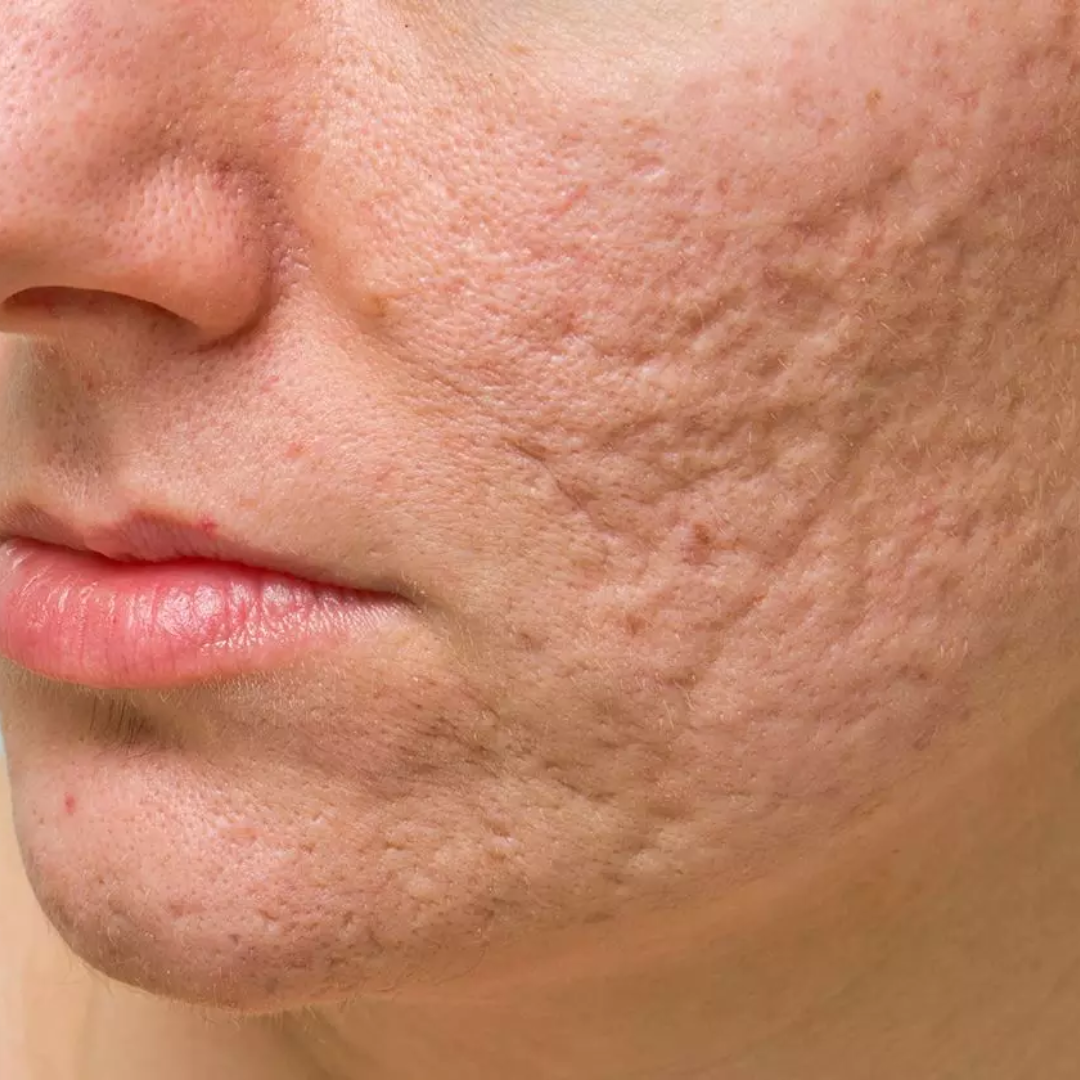
Cicatrices d’acné : comment s’en débarrasser efficacement ?
Share
Acne scars can alter the skin's texture, leaving hollows or raised areas and dulling the complexion. Whether they are atrophic (hollow) or hypertrophic (raised), they deserve appropriate treatment. In this article, we detail the types of acne scars, effective dermatological treatments, and the essential precautions to be taken before any intervention. The goal? Rediscover smoother, more even-toned, soothed skin.
1. Understanding types of acne scars
-
Atrophic scars: hollow or ice-pick-shaped, U-shaped or quadrangular, depending on depth and width.

-
Hypertrophic scars: raised, due to excess collagen during the healing phase.
These marks should not be confused with redness (post-inflammatory erythema) or pigmentation spots, which affect the superficial epidermis and generally fade more quickly.

2. When should professional treatment be considered?
Before treating acne scars, it's crucial that the inflammatory phase is fully resolved. For people who have undergoneisotretinoin-based treatment, it's advisable to wait at least six months after stopping treatment. Otherwise, any intervention could trigger new outbreaks.
3. Dermatological treatments with proven efficacy
3.1 Dermatological peeling
It uses powerful agents such as phenol (15-60%) or trichloroacetic acid TCA (10-70%) to deeply exfoliate and stimulate skin regeneration. The result is smoother skin; but beware, it becomes very sensitive during the healing process, and exposure to the sun should be strictly avoided. One study showed that a 70% TCA peel improved the skin of 66% of patients, with 81% satisfied.
3.2 Microdermabrasion
This non-invasive method uses microcrystals or a diamond head to mechanically exfoliate the skin's surface layers. By stimulating cell renewal, it promotes regeneration and collagen production. Several sessions (often 5 to 10) are required to see a visible effect on acne scars.
3.3 The laser
Particularly effective against hypertrophic scars, lasers (CO2 or Fraxel) "wound" the skin in a controlled way to boost cell renewal. Combining it with other treatments - such as fractionated radiofrequency or platelet-rich plasma (PRP) injections - significantly improves results.
3.4 Hyaluronic acid injections
Ideal for filling shallow atrophic scars, they restore volume to the skin. Effects are temporary: 6 to 12 months depending on the case, and must be performed by a qualified professional..
3.5 Radio frequency
This treatment deeply heats the dermis to stimulate fibroblasts and boost collagen production. It is particularly suitable for moderate atrophic scars, with 3 to 4 sessions spaced one month apart for visible results..
3.6 Corticosteroid injections
Used to treat hypertrophic scars, they reduce their volume by inhibiting excessive collagen production. They can precede light cryotherapy, and are sometimes a source of side effects (depigmentation, atrophy, infections).
3.7 Microneedling
This minimally invasive technique creates micro-perforations to trigger active skin repair and stimulate collagen synthesis. In a clinical study, 10 patients underwent 6 sessions and showed visible improvements, as well as a notable increase in collagen I, III and VII.
4. Prevention and essential precautions
-
Never touch or pierce its buttons to avoid scarring.
-
Consult a dermatologist as soon as the first acne flare-ups occur, to avoid the risk of scarring.
-
Respect the time required after certain treatments (such as isotretinoin) before starting any invasive care.
5. Home adjuvant routine
-
Daily sun protection: after treatments such as peels or lasers, the skin is very sensitive. The sun is a major enemy.
-
Constant hydration: good hydration is essential to promote healing and maintain the skin barrier.
-
Soothing care: after surgery, opt for gentle, healing formulations.
Conclusion
Acne scars can be faded, but rarely completely erased. Dermatological solutions such as peels, microdermabrasion, laser, injections (hyaluronic acid or corticoids), radiofrequency and microneedling offer the prospect of reduced relief and smoother texture - provided they are carried out by professionals.
Preventing scars by treating acne early and avoiding skin manipulation are equally essential. With a personalized, structured approach, you can considerably improve the appearance of your skin and regain your self-confidence.
